Mounting Oracle Object Storage using s3fs-fuse
My previous article, “Getting Free Oracle Cloud Servers and Automating Deployment with Scripts,” explained how to use the CLI to acquire free Oracle machines. Oracle’s free tier offers a total of 100GB of disk space, but you can also mount an additional 20GB of object storage as a local file system. This is especially convenient for data migration, as the data can be easily mounted to another instance. This article will show you how to enable free Oracle Object Storage and mount it as a local drive on a Linux system.
Here are the steps we’ll cover:
- Enable and activate Object Storage
- View your namespace and region
- Configure Object Storage credentials (access key, ID)
- Mount Object Storage locally
1. Enable and Activate Object Storage
Log in to your Oracle account. In the left navigation bar, find and click on Object Storage.
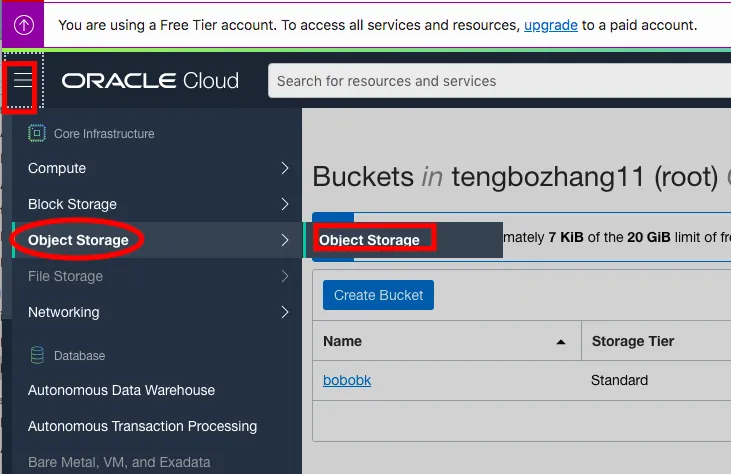
Create a new bucket and name it bobobk.
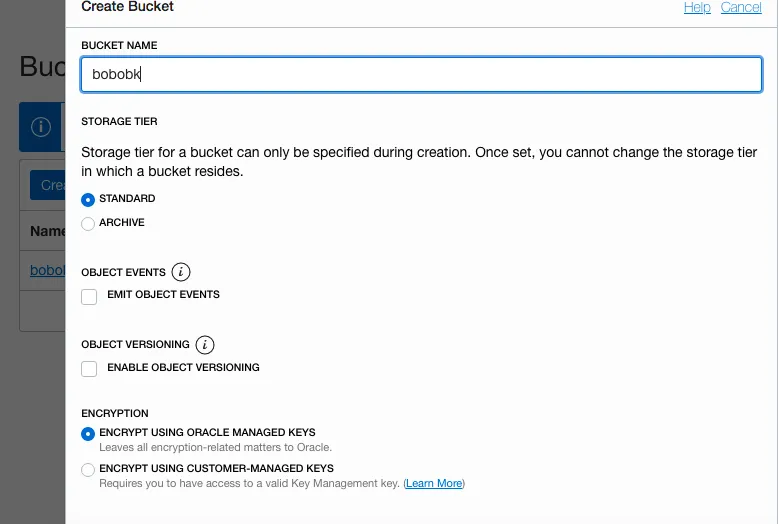
Since Oracle’s free tier provides a total of 20GB of storage, one bucket is usually sufficient.
2. View Your Namespace and Region
This step is crucial for obtaining the configuration information needed for mounting. You’ll need two pieces of information: your namespace and your home region.
Viewing Your Namespace
First, click on your profile icon in the top right corner and then click View Tenancy Information.

At the top, you’ll see “Object Storage Settings.” The Object Storage Namespace listed there is your namespace. For example, my namespace is cnquu99shcea.
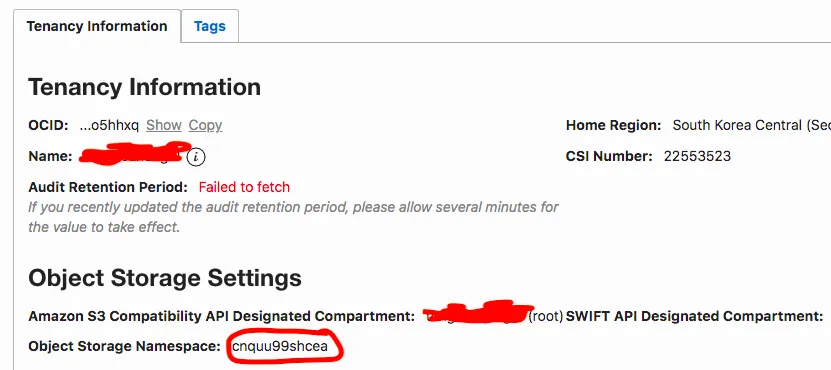
Viewing Your Account Region Identifier
On the left side of the account information page, you’ll see your region information, but it’s in text form. You need to find the corresponding Region Identifier.
View your region:

You can see my region is Seoul, South Korea. Now, go to the official Oracle documentation to find the Region Identifier for this region.
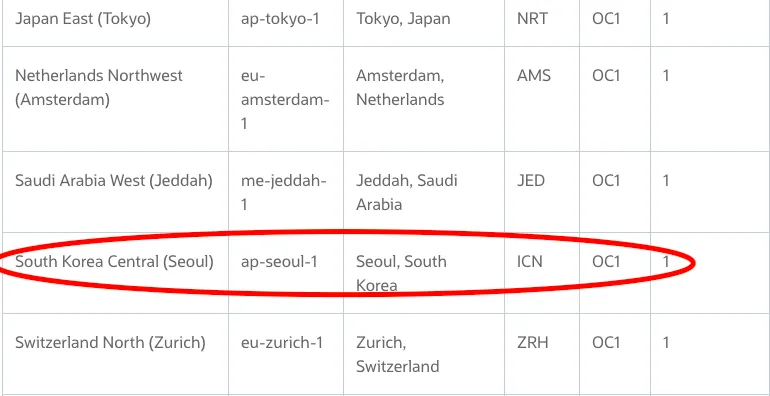
For Seoul, South Korea, the identifier is ap-seoul-1.
3. Configure Object Storage Credentials (Access Key, ID)
In this step, you’ll generate a user secret key in the Oracle console to access your object storage files. Find Customer Secret Keys in your user settings and generate a key.
First, open the user settings page. It’s in the same top-right corner as the tenancy information, just below it.
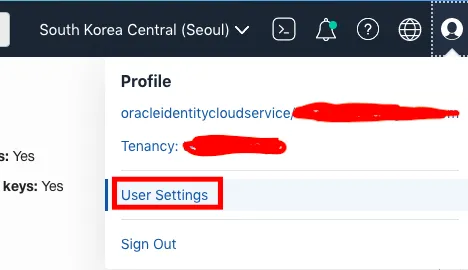
Navigate to the Customer secret keys section.
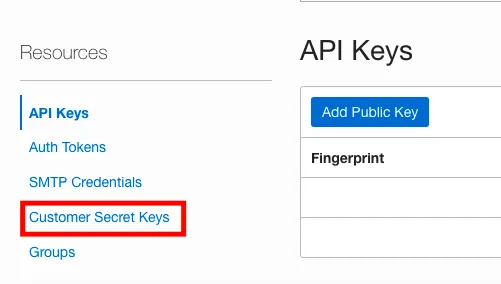
Generate a new key.
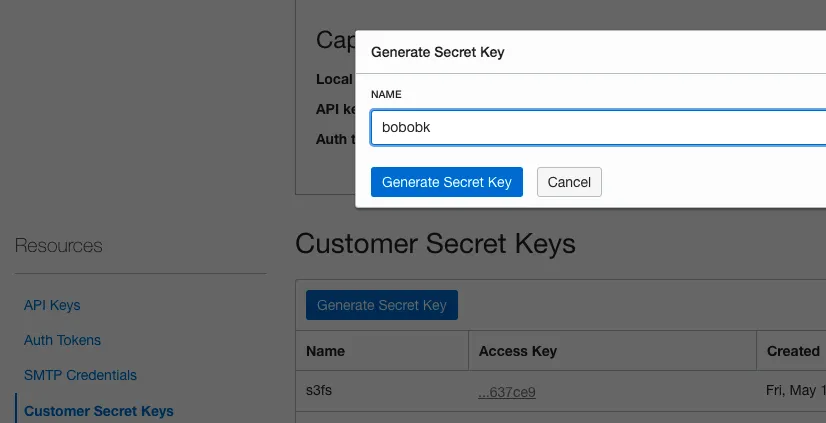
Record the key value. This key will only be displayed once. If you don’t copy it now, you’ll have to generate a new one.
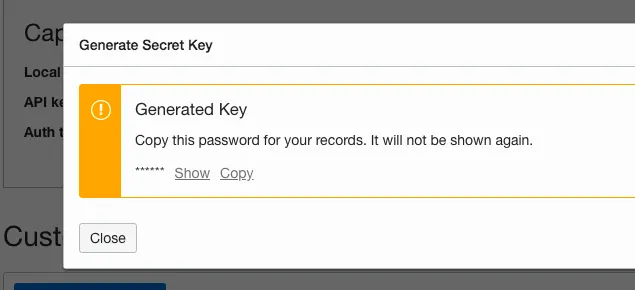
You can echo it to your terminal to save it temporarily:
echo "MwsBmp00DDTov7igqXHs3FUDoGZYLE7XdPFd36CSPW0="
Next, view the key ID. Click on the bobobk key you just created, and you can directly copy its ID.
In my example, the ID is 7cba2473c797a62743a07efcb8bcfdbbb69cb207.
Now, create a configuration file named .passwd-s3fs in your home directory. The format of the file should be id:key.
echo "7cba2473c797a62743a07efcb8bcfdbbb69cb207:MwsBmp00DDTov7igqXHs3FUDoGZYLE7XdPFd36CSPW0" > ~/.passwd-s3fs
Your object storage credentials are now configured.
4. Mount Object Storage Locally
Now, let’s mount the object storage. The command format is as follows:
s3fs [bucket] [destination directory] -o endpoint=[region] -o passwd_file=~/.passwd-s3fs -o url=https://[namespace].compat.objectstorage.[region][.oraclecloud.com/](https://.oraclecloud.com/) -onomultipart -o use_path_request_style
For my example, the actual command looks like this:
mkdir object
s3fs bobobk object -o endpoint=ap-seoul-1 -o url=[https://cnquu99shcea.compat.objectstorage.ap-seoul-1.oraclecloud.com/](https://cnquu99shcea.compat.objectstorage.ap-seoul-1.oraclecloud.com/) -o passwd_file=~/.passwd-s3fs -onomultipart -o use_path_request_style
Where:
- bucket is your storage bucket name (e.g., bobobk).
- destination directory is the target folder for mounting. Here, we create a new folder named object.
- region is your account’s home region (e.g., ap-seoul-1), as identified earlier.
- namespace is your object storage namespace (e.g., cnquu99shcea), as identified earlier.
If the command runs without errors, you can check if the synchronization was successful by:
cd object
echo "object success by chunjiangmuke tutorial([www.bobobk.com](https://www.bobobk.com))" > 1
You should now see the file named 1 synchronized in your storage bucket within the Oracle Cloud console.
Summary
This article demonstrated how to map Oracle Object Storage to a local folder using s3fs-fuse. This method effectively expands the default 50GB storage of Oracle instances to 70GB, providing both increased disk space and enhanced usability.
- 原文作者:春江暮客
- 原文链接:https://www.bobobk.com/en/724.html
- 版权声明:本作品采用知识共享署名-非商业性使用-禁止演绎 4.0 国际许可协议进行许可,非商业转载请注明出处(作者,原文链接),商业转载请联系作者获得授权。